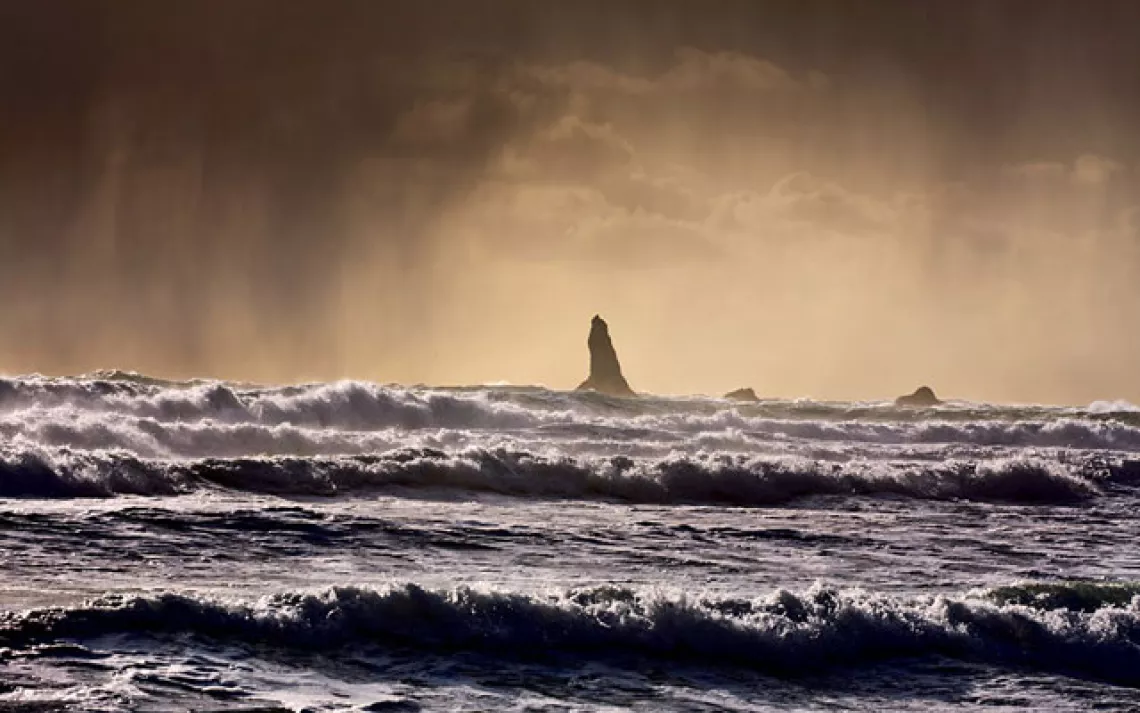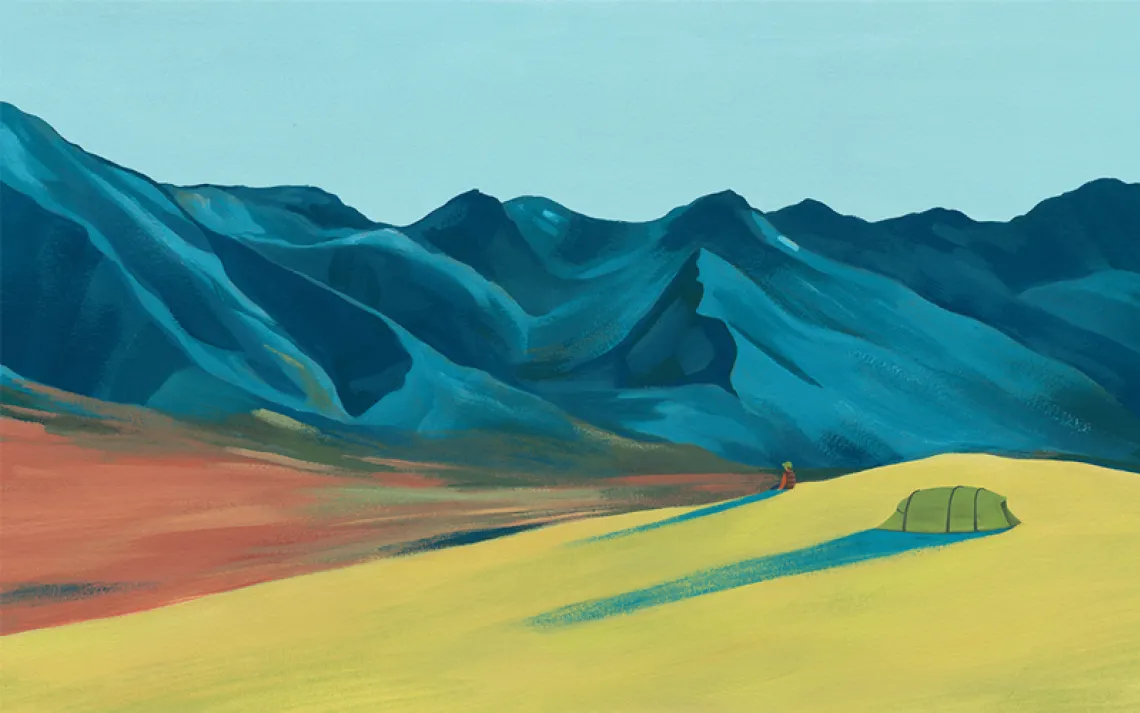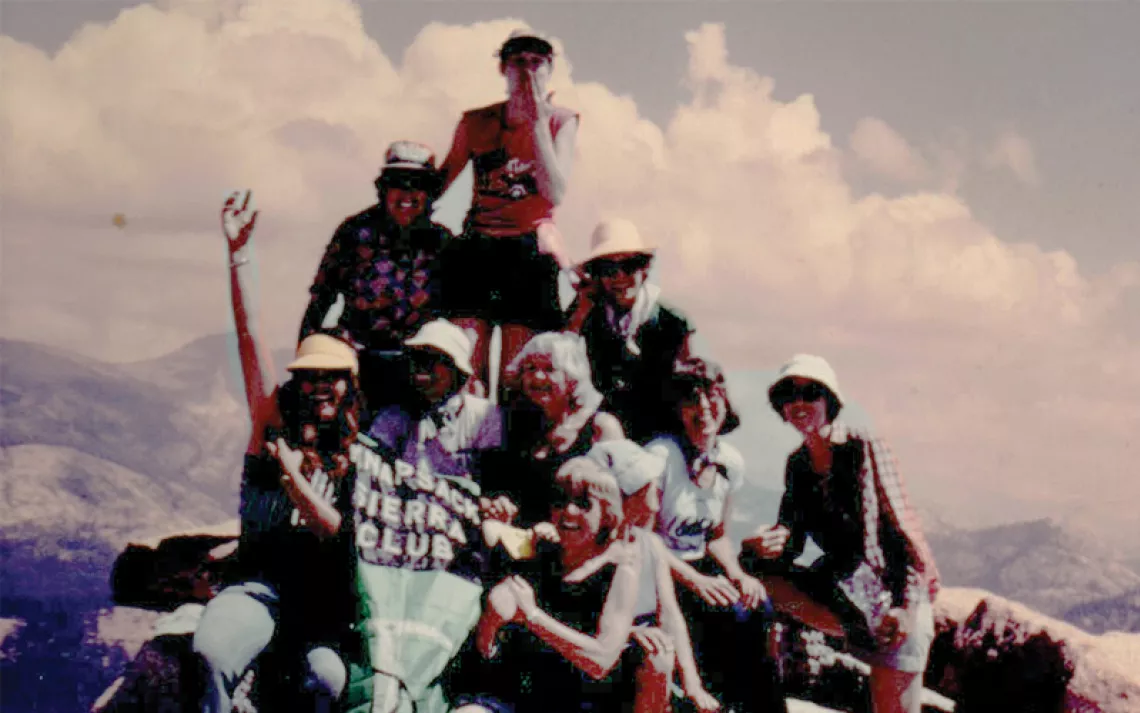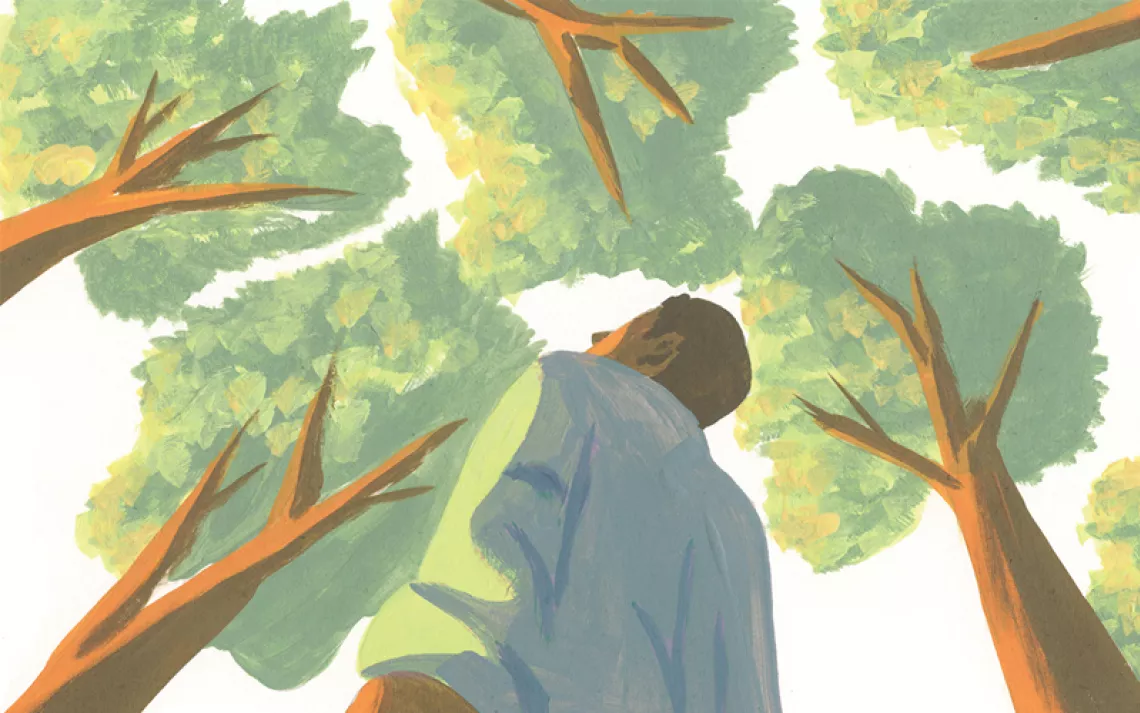Explore Olympic National Park, Washington
Over thousands of years the Pacific has battered the Olympic coastline inland

Over thousands of years the Pacific has battered the Olympic coastline inland. The iconic rock towers, called "sea stacks," are vestiges of the ancient coast. | Photo by Ethan Welty/TandemStock
My sister and her boyfriend drop me off at a small parking lot in the Olympic National Park forest, saying they'll meet me 17 miles downcoast in four days. I hoist my pack and slip into the shadows of ancient fir and cedar, my introduction to the South Coast Route. For three miles I listen, through birdsong and my own footfalls, for the big, watery yawn I'm itching to hear. But before the sound, there's the smell: salty and kelpy and pleasantly rotten.
I descend a steep bank, scramble over a tangle of bleached driftwood, and drop to the sand. And now I'm running. Miles of open beach, open water, open sky. Waves smash down, exploding mist into the wind. I leap in imitation: landlubber, landlocked soul, jumping fool.
"Adventure is when everything goes wrong." — Yvon Chouinard, founder of the company Patagonia
The surf recedes, and for a few moments the beach extends all the way out to a rock the size of a minivan. Without dropping my pack, taking off my boots, or weighing the risks, I run to it and clamber up. But as I delight in my small triumph, somewhere between crying and screaming and wanting to strip for a wild dance of gratitude, another wave looms.
It's a cold chaos, not yawning but roaring, that sweeps me off my pedestal. I'm slammed to the sea bottom, where pebbles rake my skin as I try to crawl shoreward. Then the water retreats, and I'm on the surface, gasping, laughing, collapsing just above the wrack line.

Sign up to receive Sierra News & Views
Get articles like this one sent directly to your inbox weekly.
With this action you affirm you want to receive Sierra Club communications and may vote on policy designated by the Sierra Club Board.
When I set up camp that night, everything is soaked: my tent, my sleeping bag, my carrots and noodles and chocolate. My limbs sting with scrapes full of salty grit.
As I sit in my tent and stare out the door, a crescent moon hangs on the sky. A seal swims. I hear a thousand layered voices in the breaking waves. "Welcome," some say. And others, "Enjoy the sloshy walk ahead."
 The Magazine of The Sierra Club
The Magazine of The Sierra Club



